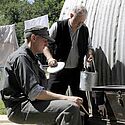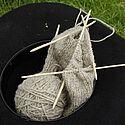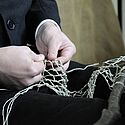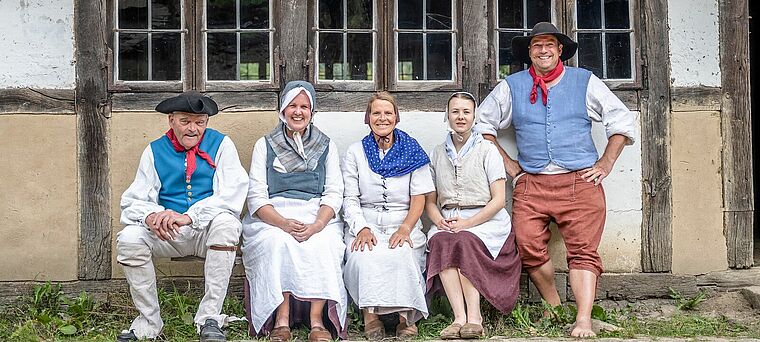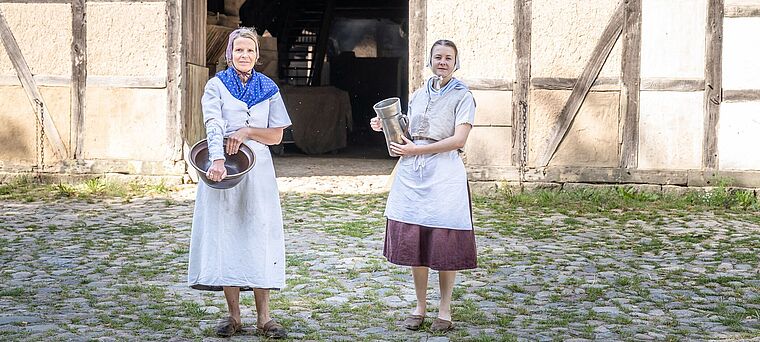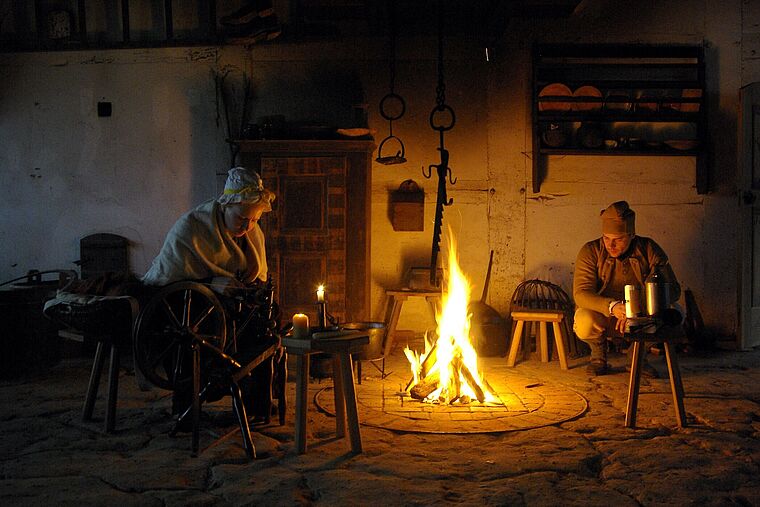1949-1969 – Dorfleben in der jungen Bundesrepublik
Seit Sommer 2023: Wie war das Leben in der jungen Bundesrepublik? Besuchen Sie die Hausfrau der 1950er Jahre am Stallgebäude des Flüchtlingssiedlungshauses und kommen Sie mit unserem Tankwart ins Gespräch, wie die Mobilität das Lebensgefühl der Zeit veränderte. Vielleicht läuft Ihnen auch ein Polizist aus den 1960er Jahren über den Weg? Oder ein Postbeamter geht mit Ihnen ein paar Schritte über unsere Königsberger Straße.
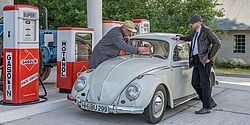
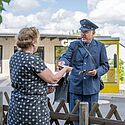
Königsberger Strasse from 1945 to 1965
Living history also brings Germany's most recent history from 1945 to 1965 back to life on ‘Königsberger Strasse’. The post-war era was a time of great hardship and uncertainty. Almost everything was in short supply and improvisation skills were a necessity. Many people lived in Nissen huts, emergency housing which had been built all over Germany to house people who had lost their homes and refugees, all living in extremely close quarters. As a result of the cramped conditions life took place outdoors as much as was possible. See a refugee family fighting to survive in the post-war era. The oven is outdoors and the family grows staple vegetables in the garden - as well as tobacco for the black market.
1904 - A fisherman's house in Drage
Travel back over 100 years to find out how a fisherman's family lived in the fertile marshes around the Elbe river, which have always provided the inhabitants with a good income. We tell the story in a fisherman's house which originally stood in Drage. The year is 1904, Germany's industrial revolution is full swing. Several generations of one family live together in the house. The building is light and bright; the cast iron range is safer and more economical than the earlier open fire. And has also improved the air in the house so that you can enjoy the wonderful smell of fish coming from the smoking oven. Although fishing is an important source of income it is not sufficient to meet all the family's needs. Vegetable growing, basket weaving and other handicrafts are also important sources of income.
The heath farm in 1804
Visit a farmer and his family living in the Lüneburg Heath area in 1804. Life on a heath farm was governed by a strict hierarchy. The ‘buur’ (farmer) ruled over the family, the farm hands and the maids. Volunteers ranging in age from adults to children present a simple rural way of life, far removed from court festivities, Goethe and international politics. Visitors can take part in these lives, discovering how people cooked, did washing and worked. Chat to the re-enactors and look over their shoulders. We offer a number of opportunities to do so from the end of January to October.
Aus der Gelebten Geschichte lernen
Wie sah der Alltag früher aus? Und was kann man auch heute noch daraus mitnehmen? Mit YouTube-Videos und monatlichen Tipps erfahren Sie, welche nachhaltigen Praktiken schon früher alltäglich waren und wie das Leben auf dem Land aussah.
Gelebte Geschichte auf YouTube
In verschiedenen Videos sehen Sie, wie 1804 der Lüttknecht selbst Socken strickte und worauf der Fischer 1904 beim Netze knüpfen achten mussten. Außerdem lassen Sie sich erklären, wie Flüchtlinge und Vertriebene 1945 einen leckeren Kaffee aus Eicheln kochten.
> Die Gelebte Geschichte auf YouTube
Monatliche Tipps 2024
Jeden Monat nehmen wir Sie mit auf Zeitreise in den Alltag früher. Sie erfahren, was früher ganz alltäglich und sogar nachhaltig war und wie Sie es auch heute noch nutzen können.
Mai: Die Brennnessel – eine vielseitige Pflanze
April: Mit einer Prise Salz wird alles gleich viel schöner
März: Die Dicke Bohne – vom Bauerngarten 1804 bis heute
Februar: Volksheilkunde in der Erkältungszeit – zwischen Aberglaube und Heilwissen
Januar: Vom Schwein zur Wurst – Und was wird aus dem Rest?
